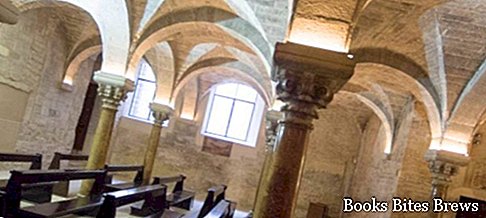What to see in Bisceglie, itinerary including the main historical monuments and places of interest, including the Swabian Castle, the Cathedral, the Church of Sant 'Adoeno and the Diocesan Museum.
Tourist information
Town of Puglia, located between Trani and Molfetta along the Adriatic coast, Bisceglie extends on a shelf placed in a dominant position on a small inlet occupied by the historic port, now used for fishing and tourist use.
The foundation of the city, in an area inhabited since prehistoric times, dates back to the second half of the eleventh century, when the settlement was conquered by Robert the Guiscard, a Norman leader, and later donated to Pietro count of Trani.
The ancient Bisceglie, called Vigiliae, was populated by the inhabitants of the numerous farmhouses in the surrounding area, who chose to live inside a fortified village due to the continuous attacks by the Saracens.
The historic center, located near the port, is surrounded by the walls built mostly by the Aragonese in the sixteenth century, replacing the first walls dating back to the eleventh century and subsequently remodeled by the Swabians.
In Largo Castello stands the Swabian Castle built by Federico II and enlarged by the Angevins, built near the pre-existing Norman tower, known as Torre Maestra, built by the Normans and then raised in the Swabian period with the defensive and guiding function of the ships in the port.
Three towers remain of the ancient structure of the Castle, two sections of curtains of the original quadrilateral perimeter, the Palatine church of San Giovanni in castro and the remains of the Palatium.
From Largo Castello through via Tupputi you reach the medieval part of the city characterized by a network of alleys that lead to the Cathedral and the Church of Sant 'Adoeno.
The Church of Saint Adoeno, dedicated to the Norman saint bishop of Rouen in the seventh century, in Apulian Romanesque style, is the oldest in the city after the Cathedral.
The stone baptismal font stands out inside, which represents a remarkable example of medieval sculpture.
What see
The Cathedral dedicated to St. Peter the Apostle is a fascinating example of Apulian Romanesque, founded in 1073 by the Norman Pietro II Conte di Trani.
Recommended readings- Trani (Puglia): what to see
- Puglia: Sunday day trips
- Manfredonia (Puglia): what to see
- Vieste (Puglia): what to see
- Altamura (Puglia): what to see
Under the presbytery of the Cathedral, in the crypt excavated in 1167 to house the relics of the Holy Martyrs, Mauro bishop, Sergio and Pantaleone, the columns and balustrade dating back to the fifteenth century, and the altar of the first half of the nineteenth century stand out.
The Cathedral offers very beautiful examples of the Romanesque style in Puglia, such as the beautiful carved portal, the apse window surrounded by decorative sculptures, and the relief on the counter-façade depicting the Traditio legis, the blessing Christ, bearing the volume of the Gospels, St. Peter and St. Paul.
The presbytery area houses a splendid seventeenth-century wooden choir, from the Andrien Benedictine abbey of Santa Maria dei Miracoli, following its suppression in the Napoleonic period.
Adjacent to the Cathedral, on the side facing the square, a chapel was added in the seventeenth century and a loggia in the eighteenth century.
The southern side of the church delimits the courtyard of the Episcopal Palace which houses the Diocesan Museum.
Inside the museum there is a rich collection of canvases, altarpieces, furnishings, statues and more, coming largely from the restoration of the Romanesque Cathedral.
Outside the old town, next to the fish square, in the area that was once occupied by the suburb called village, there is the small church of Santa Margherita, a rare example of pure Apulian Romanesque, built in local stone by Falco, judge to the court of Henry VI, descendant of the Falcone family.
The interior of the Church is simple and very suggestive, outside in the courtyard along the left side of the building, the three valuable sepulchral monuments of the noble Biscegliese family are preserved.
The Archaeological Museum, housed in the former Convent of Santa Croce, consists mainly of Palaeolithic finds found a few kilometers from Bisceglie, some in the Caves of Santa Croce, caves of karst origin, others from the Dolmen La Chianca and the Dolmen Frisari, as well as fragments of amphorae, found in the seabed near Salsello, and a Roman cinerary urn, dating back to the first century AD
Near Lama Santa Croce, about 5 kilometers from the city and surrounded by the countryside, there is the dolmen della Chianca, an important prehistoric megalithic funerary monument dating back to the Bronze Age and included in the type of wide corridor tomb, formed by the cell sepulchral and from the access corridor.




